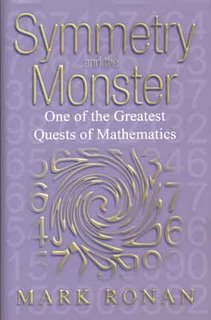Monstrous Moonshine and understanding the universe

At a time when world events are yet again showing the human race at its worst, I have been reading about one of our great achievements, the Classification of the Finite Simple Groups. The 26 sporadic simple groups are beautiful abstract structures: the largest, the Monster, has 808, 017, 424, 794, 512, 875, 886, 459, 904, 961, 710, 757, 005, 754, 368, 000, 000, 000 elements. (This number is so enormous that I have had to insert spaces after every three digits to avoid it destroying the presentation of this web page.) I find it wonderful that human beings can have any comprehension of such things.
The Monster arose from the most abstract speculation. But it gave rise to the most mysterious discovery in modern mathematics. John McKay noticed that the number 196,884 arose in a series connected with the j-function in a completely different branch of pure mathematics, while the dimension of the smallest irreducible representation of the Monster is 196,883.
 (This is John McKay's signature in my Visitors Book.)
(This is John McKay's signature in my Visitors Book.) This and other numerical coincidences suggest that there are deep, and still not understood, connections between apperently different areas of mathematics. And recent work in superstring theory suggests that the Monster is intimately connected to the deepest secrets of the universe. It may be that without the unlikely existence of the Monster matter as we know it could not exist: the 26 dimensions of string theory arise from the group theory.
It may all be Moonshine, or it may be that we are on the verge of a new understanding of the universe. In either case, the human ability to investigate such deep structures contrasts horribly with our inability to live at peace with each other.



0 Comments:
Post a Comment
<< Home